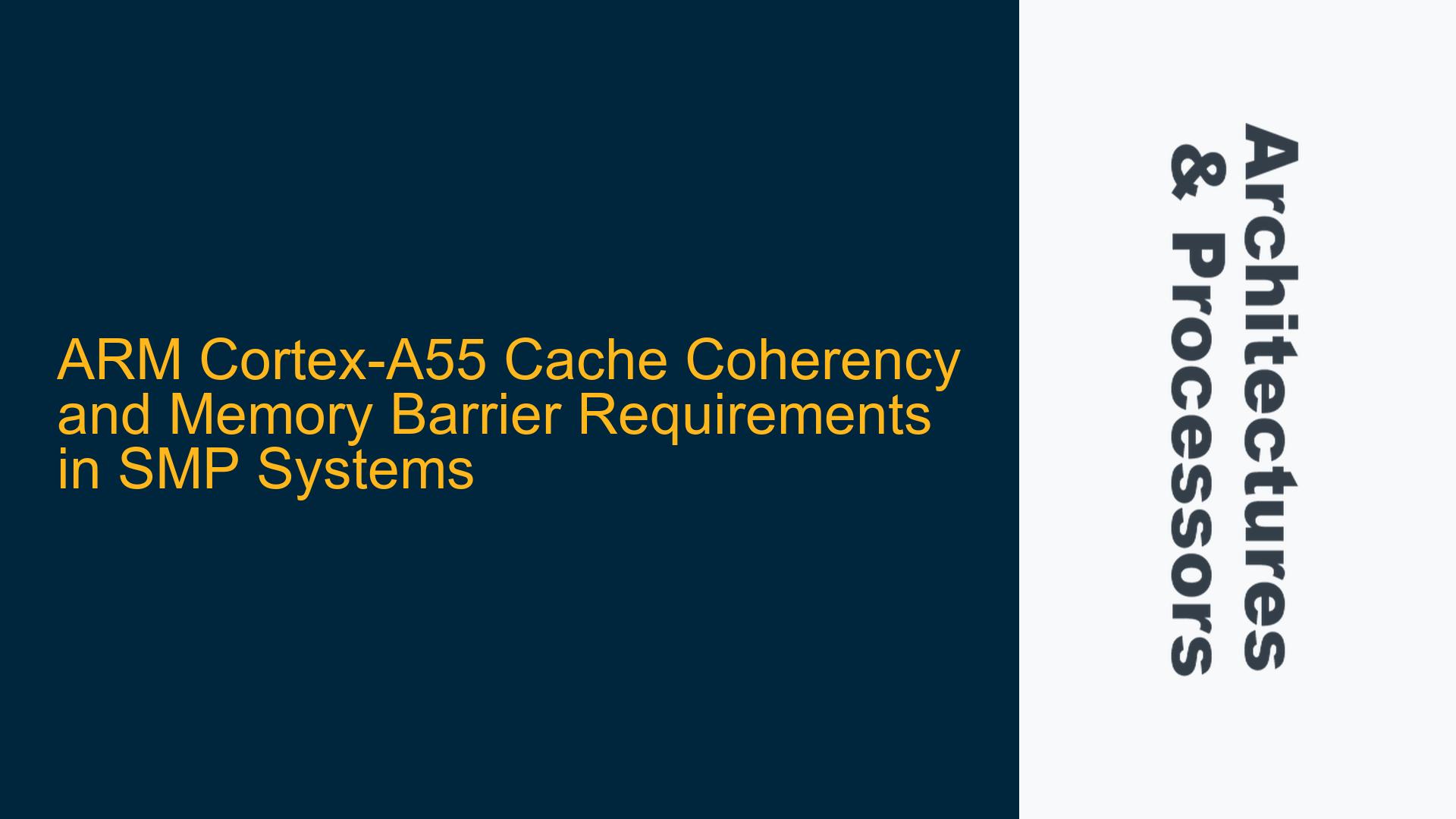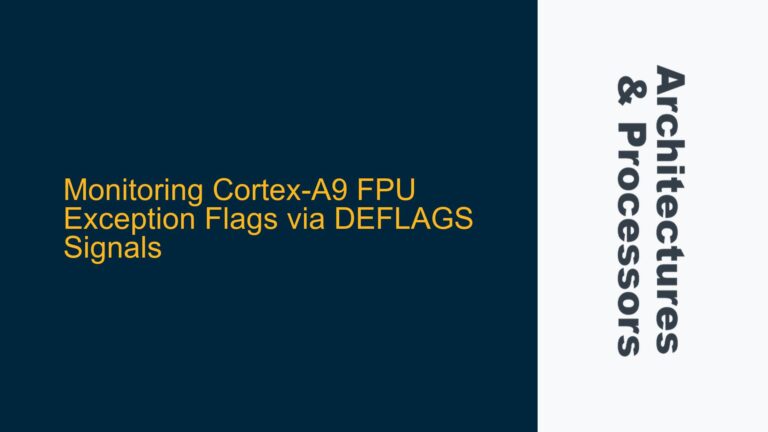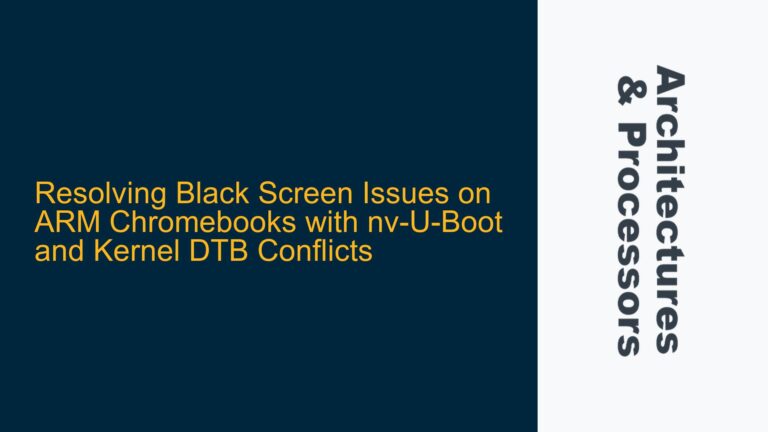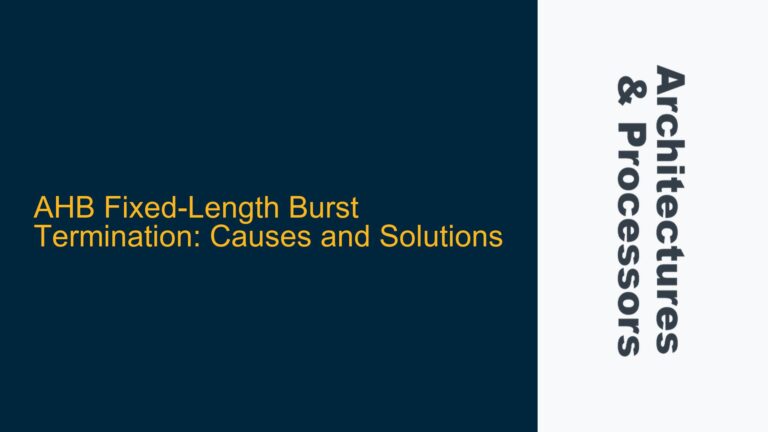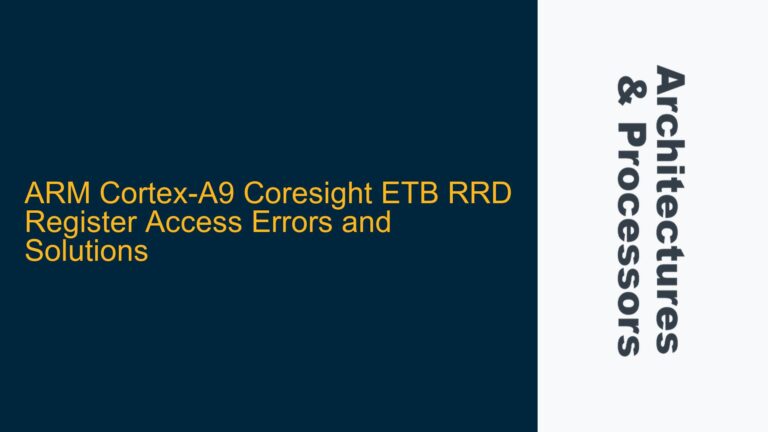ARM Cortex-A55 Invalidate Queue and Cache Coherency Mechanisms
The ARM Cortex-A55 is a high-efficiency processor core designed for use in symmetric multiprocessing (SMP) systems. One of the critical aspects of SMP systems is ensuring cache coherency across multiple cores. The Cortex-A55 implements a cache coherency mechanism that includes features such as the invalidate queue, which plays a significant role in maintaining data consistency across cores. The invalidate queue is a hardware structure that temporarily holds cache invalidation requests, allowing the processor to continue executing instructions without waiting for the invalidation to complete immediately. This mechanism improves performance but introduces complexities in ensuring data consistency, especially when multiple cores access shared variables.
In an SMP system, each core has its own private cache, and shared data must be consistent across all caches. When one core modifies a shared variable, other cores must be made aware of the change to prevent them from using stale data. The Cortex-A55 uses the MESI (Modified, Exclusive, Shared, Invalid) cache coherency protocol to manage cache states. However, the presence of an invalidate queue means that cache invalidation requests may not be processed immediately, leading to potential race conditions if proper synchronization mechanisms are not employed.
The ARM architecture provides memory barrier instructions, such as Data Memory Barrier (DMB), to enforce ordering of memory operations. These barriers ensure that all memory accesses before the barrier are completed before any memory accesses after the barrier are initiated. In the context of the Cortex-A55, executing a DMB before accessing a shared variable in an SMP system is often necessary to ensure that all cores see the most up-to-date value of the variable. Without a DMB, a core might read a stale value from its cache, even though another core has updated the variable.
Memory Type Dependency and Strongly Ordered Memory
The necessity of using a DMB before accessing shared variables in an SMP system depends on the memory type being accessed. The ARM architecture defines different memory types, including Normal Memory, Device Memory, and Strongly Ordered Memory. Each memory type has different characteristics regarding access ordering and caching behavior.
Normal Memory is typically used for RAM and is cacheable. In Normal Memory, the Cortex-A55 may use write-back or write-through caching policies, and cache coherency is maintained using the MESI protocol. However, due to the presence of the invalidate queue, cache invalidation requests may be delayed, necessitating the use of memory barriers to ensure data consistency.
Device Memory is used for memory-mapped I/O and has stricter access ordering requirements. Accesses to Device Memory are not cached, and the order of reads and writes must be preserved to ensure correct operation of hardware peripherals. In this case, memory barriers are often required to enforce the correct ordering of accesses.
Strongly Ordered Memory is a subset of Device Memory with even stricter ordering requirements. All accesses to Strongly Ordered Memory are performed in program order, and no caching is allowed. Memory barriers are generally not required for Strongly Ordered Memory because the hardware ensures that all accesses are performed in the correct order.
In the context of the Cortex-A55, if shared variables are located in Normal Memory, it is generally necessary to use a DMB before accessing them in an SMP system to ensure cache coherency. However, if the shared variables are located in Strongly Ordered Memory, the use of a DMB may not be necessary because the hardware ensures that all accesses are performed in the correct order.
Implementing Data Memory Barriers and Cache Management
To ensure correct operation in an SMP system using the Cortex-A55, developers must carefully manage cache coherency and memory ordering. This involves using Data Memory Barriers (DMB) and, in some cases, cache maintenance operations to ensure that all cores see the most up-to-date values of shared variables.
When accessing shared variables in Normal Memory, a DMB should be executed before the access to ensure that all previous memory operations have completed and that any pending cache invalidations have been processed. The DMB instruction ensures that all memory accesses before the barrier are visible to all cores before any memory accesses after the barrier are performed. This prevents cores from reading stale data from their caches.
In addition to using DMB, developers may need to perform cache maintenance operations to ensure cache coherency. For example, if a core modifies a shared variable, it may need to clean the cache to ensure that the modified data is written back to main memory. Other cores may need to invalidate their caches to ensure that they do not use stale data. The ARM architecture provides cache maintenance instructions, such as Data Cache Clean (DC CVAC) and Data Cache Invalidate (DC IVAC), for this purpose.
When working with Device Memory or Strongly Ordered Memory, the use of DMB may not be necessary, but developers must still ensure that memory accesses are performed in the correct order. In some cases, it may be necessary to use other memory barrier instructions, such as Data Synchronization Barrier (DSB) or Instruction Synchronization Barrier (ISB), to ensure that all memory operations are completed before continuing execution.
In summary, the ARM Cortex-A55’s invalidate queue and cache coherency mechanisms introduce complexities in ensuring data consistency in SMP systems. Developers must carefully consider the memory type being accessed and use appropriate memory barriers and cache maintenance operations to ensure correct operation. By understanding the underlying hardware mechanisms and following best practices, developers can avoid subtle hardware-software interaction issues and performance bottlenecks in their embedded systems.
